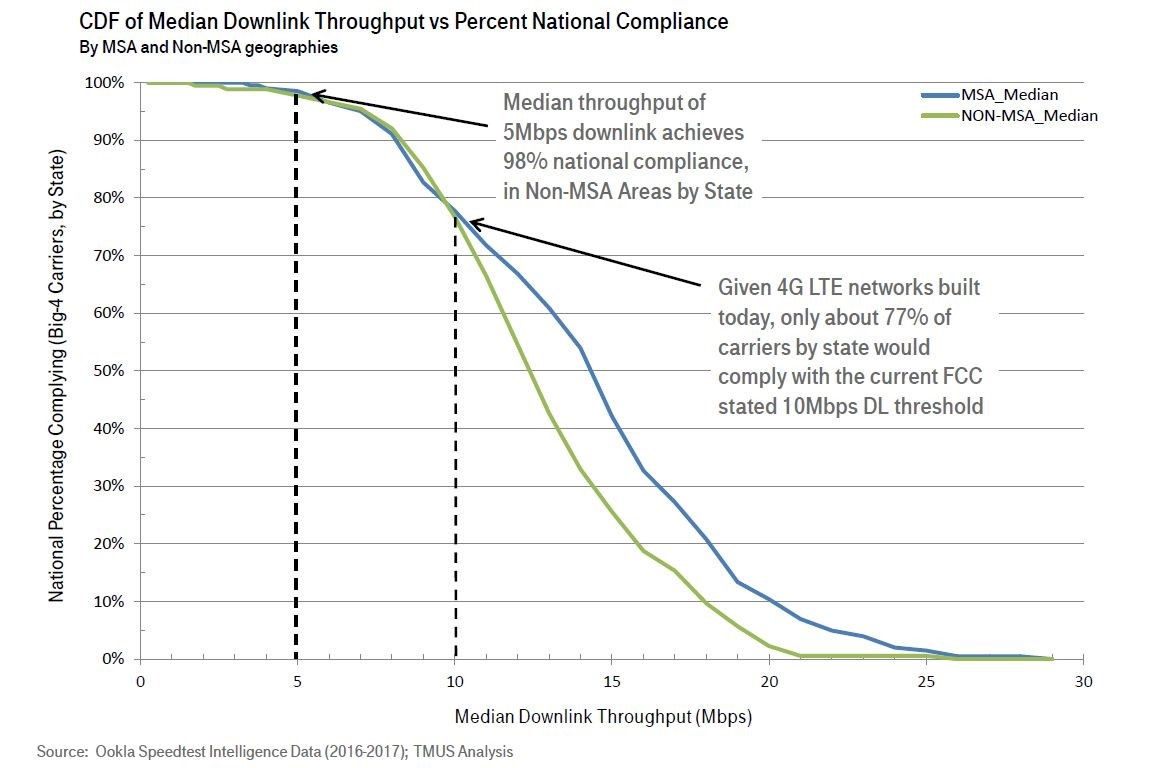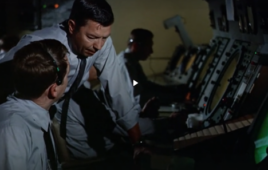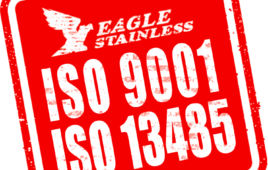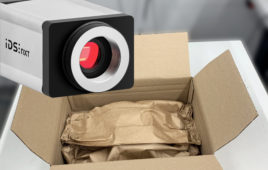Though rural carrier groups cheered the FCC’s decision to adopt a revised Mobility Fund Phase II plan at its February meeting, T-Mobile is now requesting the Commission make a few more tweaks.
In a petition filed with the FCC late last week, the Un-carrier asked the Commission to revisit the speed and latency thresholds adopted as part of the Order. T-Mobile called the current benchmarks of 10 Mbps for downlink and 1 Mbps for uplink “out of sync with the realities of providing mobile service in rural and hard-to-serve areas,” but honed in on the downlink speed as the main culprit.
According to the Un-carrier’s analysis of Ookla Speedtest Intelligence data, only around 77 percent of both urban and rural users are achieving median speeds at or above the 10 Mbps threshold. Given this existing lag – even in “relatively urbanized areas” – T-Mobile said it would be “overly burdensome” to expect carriers to meet the existing standard in the rural and hard-to-reach areas that will be funded in Phase II.

Credit: T-Mobile via FCC Electronic Comment Filing System
The Un-carrier said its analysis indicated a more appropriate threshold would be 5 Mbps, which would be achievable by 98 percent of cohorts nationwide. Around 98 percent of cohorts already meet or exceed the uplink threshold, T-Mobile said.
“Mobile networks in rural areas are typically characterized by larger cell sizes than in denser areas, as well as greater diversity of terrain throughout each cell. These and other factors mean that network performance may vary more from location to location within each cell than it would in a smaller cell in a denser area. As a result, speed measurements near the cell edge or in areas of a cell that are affected by terrain or other obstructions are likely to be lower than near the tower,” T-Mobile argued. “As a consequence of an overly aggressive 10 Mbps throughput requirement, bidders will be forced to ‘overdesign’ their network for a given area, which will increase the bid prices per unit area, and the Commission’s funding budget will yield significantly less new coverage than otherwise could be possible.”
In addition to reducing the downlink threshold, T-Mobile recommended the Commission adopt a revised requirement that at least 90 percent of the measurements come in at “not less than 0.5 Mbps on the downlink and at least 90 percent of the measurements not less than 0.15 Mbps on the uplink.”
The Un-carrier also took aim at the Commission’s data latency expectations of 100 ms or less round trip, noting that only about 55 percent of 4G LTE networks could meet that goal today. A more “technologically realistic” benchmark that 98 percent of cohorts could achieve would be latency of 220 ms, T-Mobile said.
Filed Under: Industry regulations




